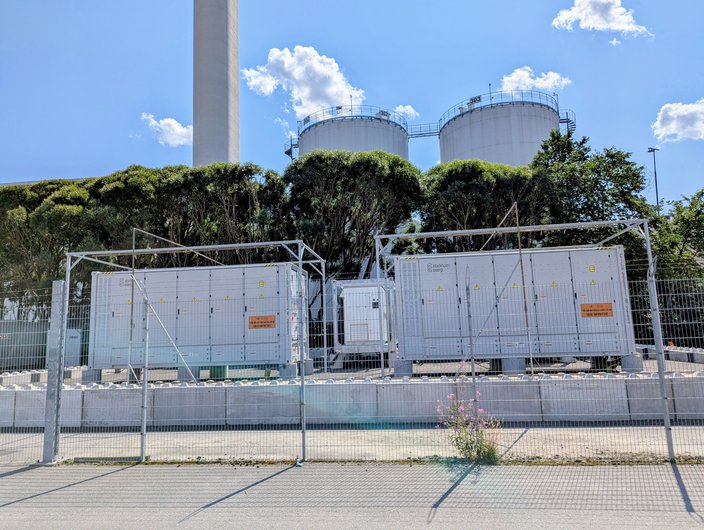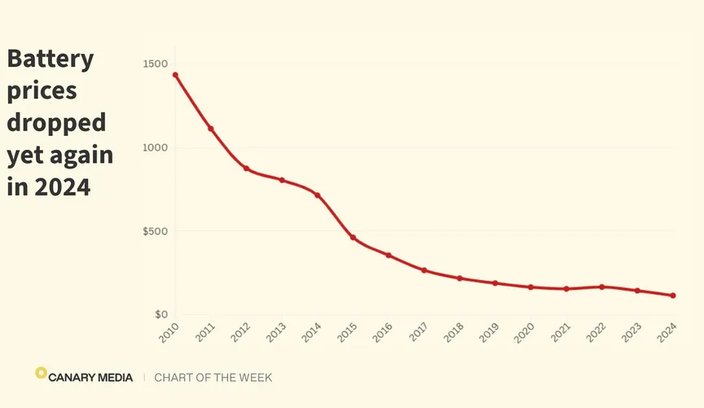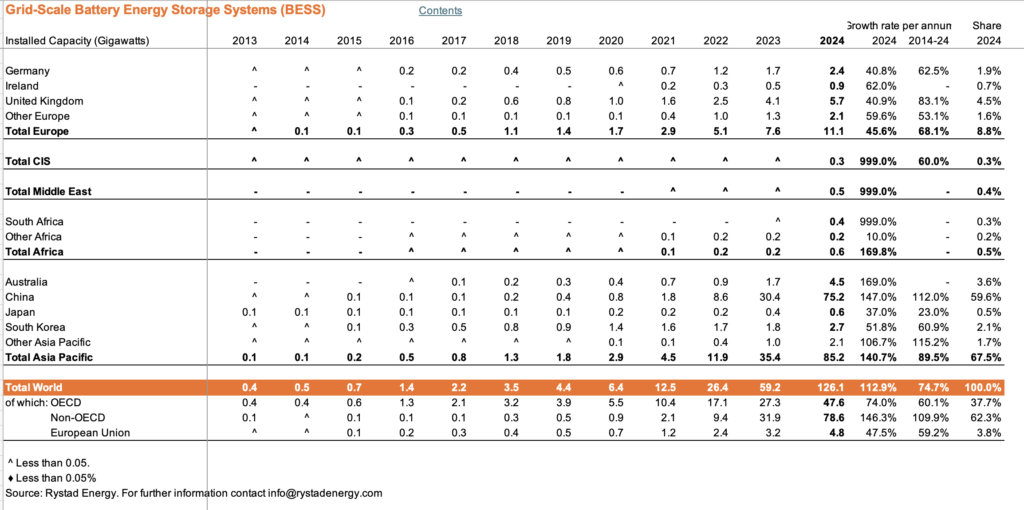BESS (Battery energy storage systems) capacity worldwide has more than doubled every year since 2020
Battery Storage Is Unlocking the True Power of Renewable Energy
Written by Weston Wilson for We Don’t Have Time 19 July 2025
For years, solar and wind have been hailed as the cheapest and cleanest sources of electricity on the planet. But there’s always been a catch: they don’t work all the time. The sun sets, the wind stops blowing—and in those moments, something else has to keep the lights on. That’s why the energy transition has long hinged on a largely missing link: storage.

Battery storage near the We Don’t Have Time offices in Stockholm.
Without storage, renewables cannot provide “firm” power, meaning electricity services that can be counted on at any time, day or night. Solar might flood the grid with cheap electricity at noon, but that’s of little use during the dinner rush or before sunrise. To create a reliable grid based on renewables, we need ways to save that surplus clean energy to deploy when it’s needed.
So, you take your solar panels and your wind turbines and you plug them into a battery. Voila! Problem solved, right?
Not quite.
Adding batteries to your system adds cost, and that has meant it’s cheaper to use other technologies to cover solar and wind’s intermittency, which usually means burning fossil fuels. And while climate-conscious consumers might be happy to pay that green premium, the general public is not.
But the astonishing decline in battery cost has changed the math, spurring new research from Ember that asks a provocative question: How much would it cost to provide continuous, round-the-clock electricity using only solar power and batteries?

Image credit: https://www.canarymedia.com/articles/batteries/chart-lithium-ion-battery-prices-fall-yet-again
The results are worthy of excitement: In cities with abundant sunshine like Las Vegas, Mexico City, and Muscat, a solar-plus-battery system could provide firm, 24-hour power for less than the cost of traditional baseload energy sources like coal or nuclear more than 95% of the time. This suggests that in sunny regions, this combination will beat fossil fuel alternatives on price, except during rare weather events that temporarily reduce solar output. Even then, the gap is shrinking fast.
That makes this more than a theoretical breakthrough. It’s a signal that a genuinely clean, firm, and affordable power system is within reach.
And the industry is responding.
Battery energy storage systems (BESS) are being deployed at an exponential rate. BESS capacity worldwide has more than doubled every year since 2020. This year is shaping up to be no different: Global BESS deployment is up 54% so far this year compared to the same period last year. In June alone, nearly 8 gigawatts of new BESS entered commercial operation globally, more than the whole world’s capacity in 2020. This year, BESS capacity will overcome the long-reigning champion of energy storage, pumped-storage hydropower.

It’s hard to overstate the significance of this moment: Technology innovation has brought us to the point that clean systems are not just the ecological choice, they’re the economical choice. We’re entering a new phase of the energy transition—one where the barriers to renewables are no longer technological or economic, but political. And that means the next challenge isn’t proving that clean energy works. It’s making sure we have the will to build it.
